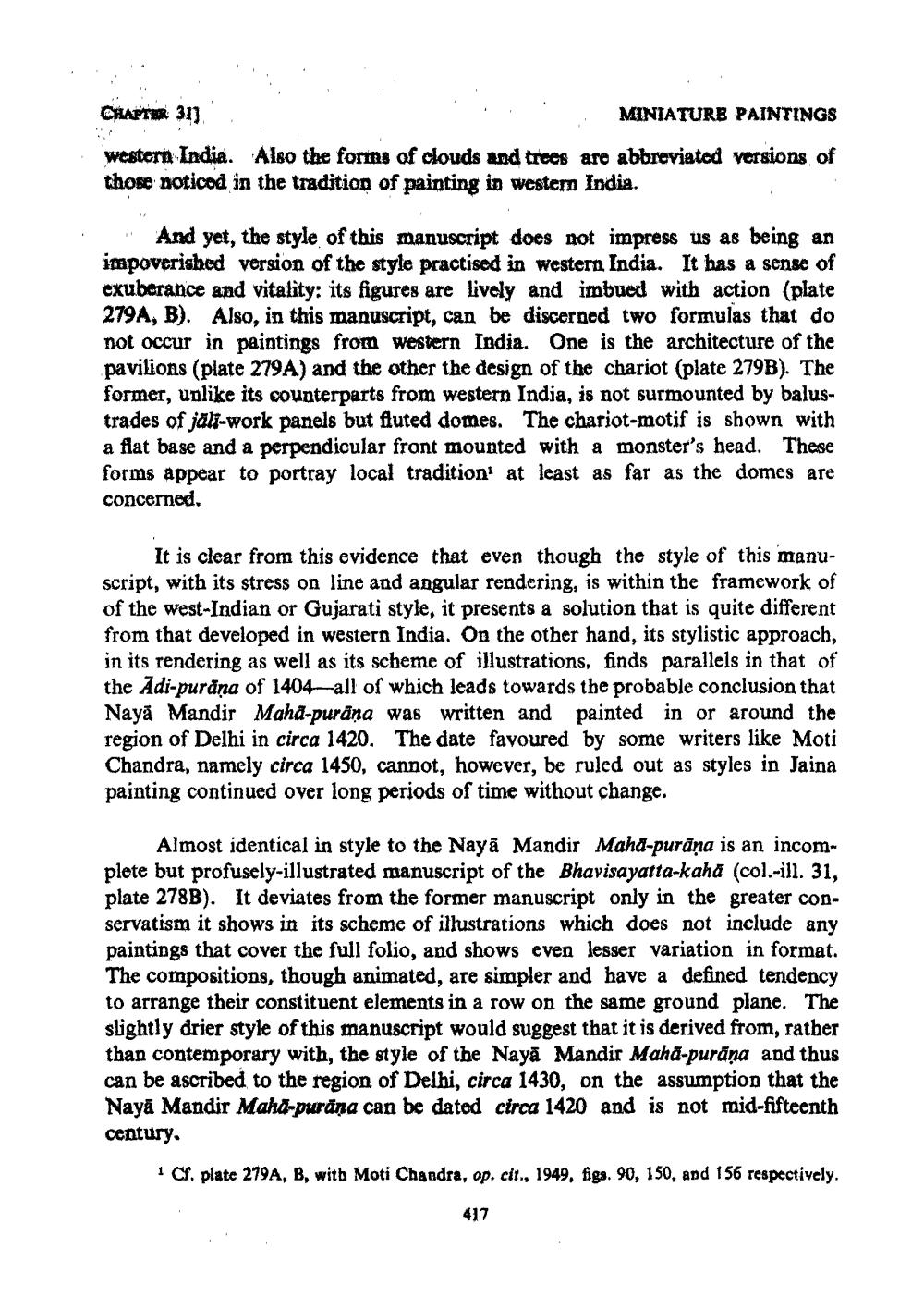________________
CHAPTER 31)
. MINIATURE PAINTINGS western India. Also the forms of clouds and trees are abbreviated versions of those noticed in the tradition of painting in western India.
. And yet, the style of this manuscript does not impress us as being an impoverished version of the style practised in western India. It has a sense of exuberance and vitality: its figures are lively and imbued with action (plate 279A, B). Also, in this manuscript, can be discerned two formulas that not occur in paintings from western India. One is the architecture of the pavilions (plate 279A) and the other the design of the chariot (plate 279B). The former, unlike its counterparts from western India, is not surmounted by balustrades of jali-work panels but fluted domes. The chariot-motif is shown with a flat base and a perpendicular front mounted with a monster's head. These forms appear to portray local tradition' at least as far as the domes are concerned.
It is clear from this evidence that even though the style of this manuscript, with its stress on line and angular rendering, is within the framework of of the west-Indian or Gujarati style, it presents a solution that is quite different from that developed in western India. On the other hand, its stylistic approach, in its rendering as well as its scheme of illustrations, finds parallels in that of the Adi-purana of 1404-all of which leads towards the probable conclusion that Nayā Mandir Maha-puräna was written and painted in or around the region of Delhi in circa 1420. The date favoured by some writers like Moti Chandra, namely circa 1450, cannot, however, be ruled out as styles in Jaina painting continued over long periods of time without change.
Almost identical in style to the Nayā Mandir Mahd-purāna is an incomplete but profusely-illustrated manuscript of the Bhavisayatta-kaha (col.-ill. 31, plate 278B). It deviates from the former manuscript only in the greater conservatism it shows in its scheme of illustrations which does not include any paintings that cover the full folio, and shows even lesser variation in format. The compositions, though animated, are simpler and have a defined tendency to arrange their constituent elements in a row on the same ground plane. The slightly drier style of this manuscript would suggest that it is derived from, rather than contemporary with, the style of the Nayā Mandir Maha-purāna and thus can be ascribed to the region of Delhi, circa 1430, on the assumption that the Nayā Mandir Mahd-puräna can be dated circa 1420 and is not mid-fifteenth century.
1 Cf. plate 279A, B, with Moti Chandra, op. cit., 1949, figs. 90, 150, and 156 respectively.
417




